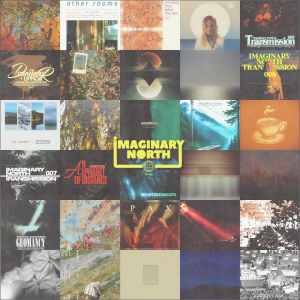The use of the standard music trifecta of bass, drums, and melody does ground these pieces in the familiar, yet the way Keith Fullerton Whitman has broken these out of their mold means what he is doing is still risky and groundbreaking research.
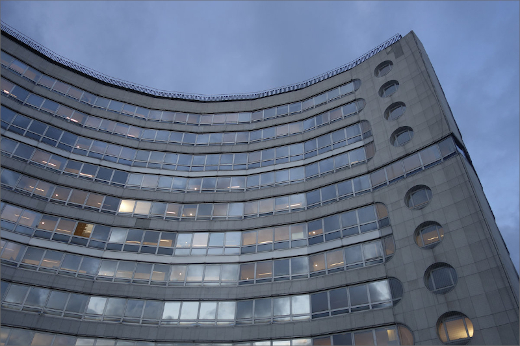
A sense of brain stimulation
Keith Fullerton Whitman was one of those electronic musicians I often heard about, but never listened to much of, except for the tracks of his I’d had from various compilations. I always enjoyed those tracks immensely, but for whatever reason, hadn’t followed up on them to find more of his work. Every devoted music fan will have gaps in their listening like this, artists or albums they have liked, but need to fill in with closer listening and attention. The quest for new music is eternal, and to amend the gap, I’ve sought out and listened to some more of Whitman’s work these past six months.
Presque Là is my favorite of his albums that I’ve listened to so far and it is relatively fresh off the plate, released this past February though the recording itself dates back to November 15, 2017. Devoted musicians, like devoted listeners, will often have a backlog of material recorded that has never seen the light of day. These pieces were intended to be issued on three hour long cassettes, but it never happened. Luckily, with sites like Bandcamp, artists can now make their works available directly to their fans when a label deal falls through, and I am glad he put this up. He has broken down the works into a Red, Yellow and Blue tape, with two fifteen minute pieces for each side. The only thing I miss about streaming this instead of listening on tape, is the joy of popping them in out and of the cassette deck.
The album is made up of three hours of music recorded at the INA-GRM studios in Paris, France a place with a storied past in the history of electronic music. The work was recorded in a single eight-hour session and was originally intended to be released on three tapes, with thirty minutes for each side, two fifteen minute compositions per side. The title Presque Là recalls to me the work Presque Rien from the late French composer Luc Ferrari. Presque Rien translates to “Almost nothing” in English, while Presque Là can translate to “Almost There.” The word Là can also mean a musical note. “Almost There” is thus a perfect title for this collection of pieces.
The music almost always gets to a point of standard musical completion, but the hope for notes almost always disappears, leaving the listener hanging, and when least expected. Whitman explains the compositions like this, “Adhering to the time-honored bassline / chord-melody / drum triumvirate, I rendered three hours of music during a single day-long session that breaks free from traditional, logical progressions. The individual pieces gradually build in intensity, only to evaporate at perhaps the least likely moments; or in any case a point in which the forward momentum implanted into the listener would be best left to accrue. Most would interpret this as a series of frustrations; the sensation of having to sneeze but being unable to.” This structure does not in fact frustrate me. It is what makes this music more interesting and novel. I pay attention to it, because it has broken free of the formulas and I don’t know what it is going to do next. As such it captures the imagination. In a way, it can be thought of as a kind of electronic jazz or prog rock playing in extremely odd time signatures, but ones that don’t necessarily finish a particular phrase, or pick the same strand back up when the music does continue.
Frenetic and complex staccatos ::
Part of what first grabbed me with the four pieces from the Red Tape was the preponderance of
harpsichord-like sounds Whitman used in his electronic palette. Coupled with off-kilter and fractured beats, these combined timbres make me feel like I am attending a chamber concert in a different branch of time, in a parallel universe where baroque musicians are accompanied by little drum machines that stutter in their frenetic and complex staccatos. The harpsichord-like sounds continue to flow into the first part of the Yellow Tape where the beats have become even more alien feeling and unpredictable. I find these rhythms hypnotic, and abstract at the same. There is a sense of brain stimulation going on when I listen to this music.
Steady tempos do have the capacity to induce entrainment within the human body, and while I may not be getting up to dance to these rhythms, I do find them to have an effect that can entrance, even when they are interrupted and end up careening off down other avenues of activity. As the Yellow Tape progresses, I start to wonder about the behavior of the electronic system he has created for this music. How does it know when to stop, speed up, slow down, or shift into overdrive? “Yellow Tape A2” is made up of many little beginnings and endings, of quick pulses and tones that erupt out of the silence before fading back down to quietude. Constant shifts, starts and pauses give this work its own unique cadence. The pulse is not steady, but erratic, but its erratic nature is itself steady, forming its own kind of atemporal uniformity.
Every once in a while throughout these pieces there is a pause and what sounds like a test tone from a television set or someone pressing the zero button on an old land-line telephone. These are like very brief reset noises that make it sound as if a new program or sequence is about to start. They bring me out of the spell I was under for a time, but just for a moment, because as soon as the music gets moving again I am caught up in Whitman’s manic mesmerization. The use of the standard music trifecta of bass, drums, and melody does ground these pieces in the familiar, yet the way he has broken these out of their mold means what he is doing is still risky and groundbreaking research.
Whitman also says in the notes that he had the intention to “remove the composer completely”
from the work itself. In fact, he walked around the nearby streets and had lunch while the electronic system he had set up was making its music. This has clear precedents with the work of John Cage who wanted to remove himself from the process of creation. Before John Cage, the composer Joseph Matthias Hauer had wanted to erase his personality from the music he was making. To do so Hauer developed systems of chance operation using the I Ching, well before Cage had hit upon the idea. Hauer was also a rival originator of twelve-tone music coming up with his theory of “dodecaphonics” shortly before Arnold Schoenberg. Hauer was a probable model for the character Joculator Basiliensis in Herman Hesse’s novel The Glass Bead Game, which involves the creation of games that connect different intellectual ideas together, often relating them to music. Hauer wanted to be a conduit for what he called the “continuum” and what spiritually and religiously inclined people might think of as higher powers within the universe.
The artistry is in setting up the system ::
I don’t happen to know what Keith Fullerton Whitman’s philosophical predilections might be, but one way to make music where the composer distances him or herself from the creation, is by setting up electronic musical systems that once they are running, do the rest of the work themselves. This is not to say they lack artistry. The artistry is in setting up the system, designing the game as it were, and all the rules the game or system operates on. For this system Whitman writes, “These pieces are the result of an experiment in automating virtually every facet of the ‘form’ of a piece of Electronic Music by way of 12 randomly generated control voltages multiplied and applied to 38 discrete parameters. The idea at work here is the implementation of a complete system which allows, via a simple algorithmic approach utilizing core Analogue Computer concepts, the piece to police itself, eschewing the predictive, emotionally manipulative aspects of traditional build-release dynamics in Electronic, popular, and in fact the majority of Western music.”
I like that he mentions the “emotionally manipulative aspects” here. So much music is written to brow beat the emotions the composer wants you to feel right into the listener. There isn’t much choice in how to feel about that kind of manipulative music, because it has been predetermined for you to give precise reactions.
I find the music of Presque Là to be refreshing precisely because of this lack of manipulation. It stimulates the mind and expanding our notions of what is possible for music to do other than massage you into feeling sad, angry, mellow, or exalted. Using chance to create systems that take out the familiar have results that are no less beautiful. Listening is like taking a new path through the circuitous labyrinth of space and time. The beauty here continues all the way to the final notes of the Blue Tape pieces. After many twists, turns, dead ends, and reroutes, the music leads to a clearing that can only be found in the mind.
Keith Fullerton Whitman is a Composer and Performer based in Fort Greene, Brooklyn. Initially active in more trangressive forms of improvised and electronic music, his work over the past two decades has dealt largely in the creation of and delineation of control to algorithmic and generative systems.
Presque Là is available on Bandcamp.






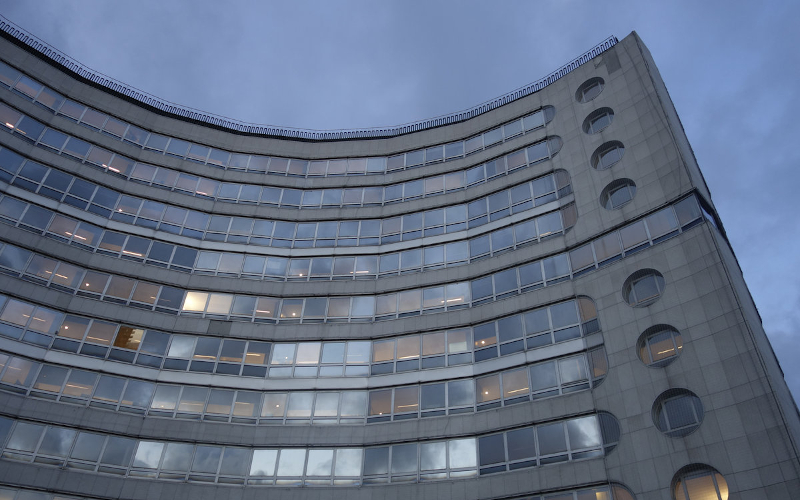
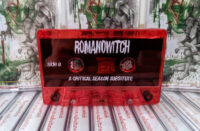
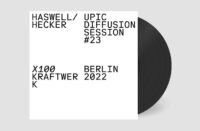
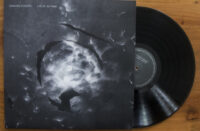



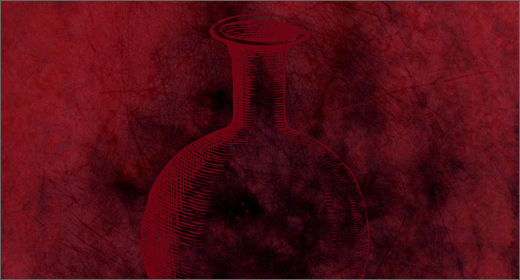

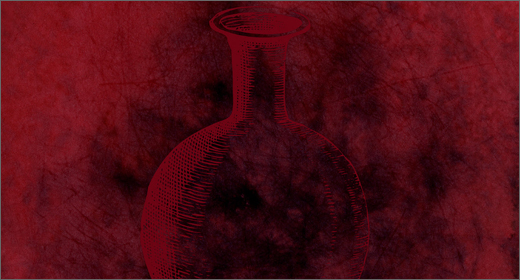


![Romanowitch :: A critical season substitute (glitch.cool) — [concise]](https://igloomag.com/wp/wp-content/uploads/2025/03/romanowitch-a-critical-season-substitute_tape_feat-75x75.jpg)







